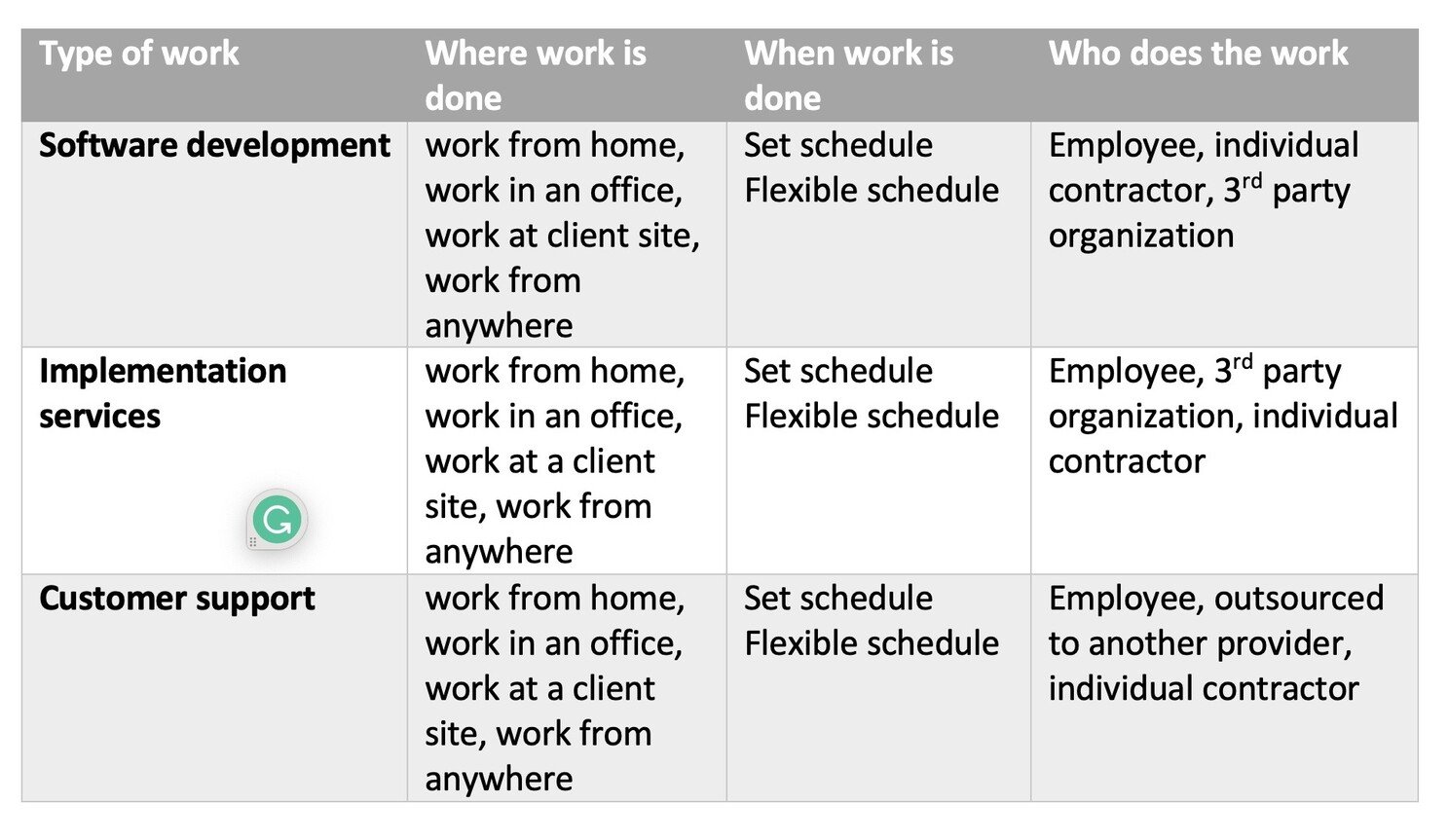It’s Not Just About Where People Work
Organizations are having the wrong conversations right now. The discussions they should be having are so much broader, starting with how has the business strategy has evolved over the past few years and what it will take to bring it to life.
There is a need for businesses to balance what they need for success with an awareness of how employees want to work. Employers can be stubborn and push for a single answer of…I want people in the office because that’s the way it’s supposed to be. However, that unwillingness to explore how to balance key stakeholder needs and interests guarantees that they will not get the highest level of productivity and engagement.
The questions organizations should be talking about include the following:
What's changing in our industry?
What do those changes mean for how we deliver products and services?
What has changed with our workforce - demographics, expectations, etc.?
What workforce strategies continue to serve us, and which ones have outlived their value?
How do we differentiate ourselves in the marketplace for customers and applicants?
As you work through those questions, here are three things to focus on:
What does your business strategy require today?
Let’s take a simplified example.
Your organization designs and develops software, provides implementation services, and provides customer support.
Your 2023 strategy includes three key areas of focus – revenue growth, improved profitability, and being a talent attractor for top software engineers. With those strategies in mind, you need to ask yourself questions about how you want the work to be done.
To design software – engineers need to have access to the right tools and other professionals to support their work. Many parts of the software development work are done individually with collaboration at specific steps. Depending upon the security requirements, the sophistication of the technology infrastructure of the organization, and the level of collaboration needed, much, if not all of the work can be done from a remote location.
To provide implementation services – professionals need to be able to work with a customer on their system, provide change management support, provide appropriate documentation, etc. Depending on the software being implemented, this work may or may not require in-person activities.
To provide customer support – agents respond to requests and need appropriate tools to access accounts, research issues, track progress, and resolve or escalate issues. Depending upon the sophistication and security settings of your tools, this work may or may not require being based in a specific facility.
What options exist for how the workforce contributes to implementing the strategies?
We’ve seen during the worst parts of the pandemic that much of the knowledge workers’ work can be done outside of a physical office. Is it always optimal, probably not? However, it’s possible. People found ways to think and work differently, and organizations upgraded their systems to do what they had not been interested in, willing, or needed to do in the past.
Customer support is often provided from a delivery center location with many people co-located. But we know that distributed work for this sector is possible. Years ago, airlines and other service providers started hiring people to do this work from their homes, and on the schedules they could work, knowing that this cut down overhead costs and gave them access to a workforce that might not be able to support them without this flexibility.
Organizations should step back and think creatively about what the future of work should look like for them and their industry as a whole. The economic, technological, and cultural landscapes continue to evolve, which means our workplaces and the way we work has to evolve as well.
What flexibility can be provided for when, where, how, and by whom work is performed?
I believe the keyword for any workforce strategy is flexibility. What options can you provide to your managers on how they deliver products and services, and what options can they provide to their staff members?
As you see below, there are various options and decisions to be made on how you want to deliver the services you provide. I’m sure there are other options beyond my basic example, but it gives a flavor.
If your organization is focused solely on a strategy to get your employees back in the office and isn’t clear why that is a core requirement of the work, you will struggle to get the best from your employees as a whole.
If you’re searching for a one-size-fits-all strategy for all types of roles, you are also setting yourself up for failure.
Different type of work requires and allows for different work structures. Don’t limit yourself by only focusing on one. To attract and retain the best talent in your industry, you will need flexibility.
My charter to all organizations:
Think broadly and creatively about the future of work in your industry.
Talk to your workforce and get their ideas on the best way to deliver the services they provide.
Develop a workforce strategy that maximizes the organization’s ability to attract and retain talent and its ability to hit its goals.
Stay future-focused but leverage the lessons from the past. Focus on what’s right for today and the future, not what worked in the past.
Today's workforce strategies require insights, creativity, flexibility, and ongoing evolution. Is it time to reconsider the questions you're asking and the answers you've been giving?

